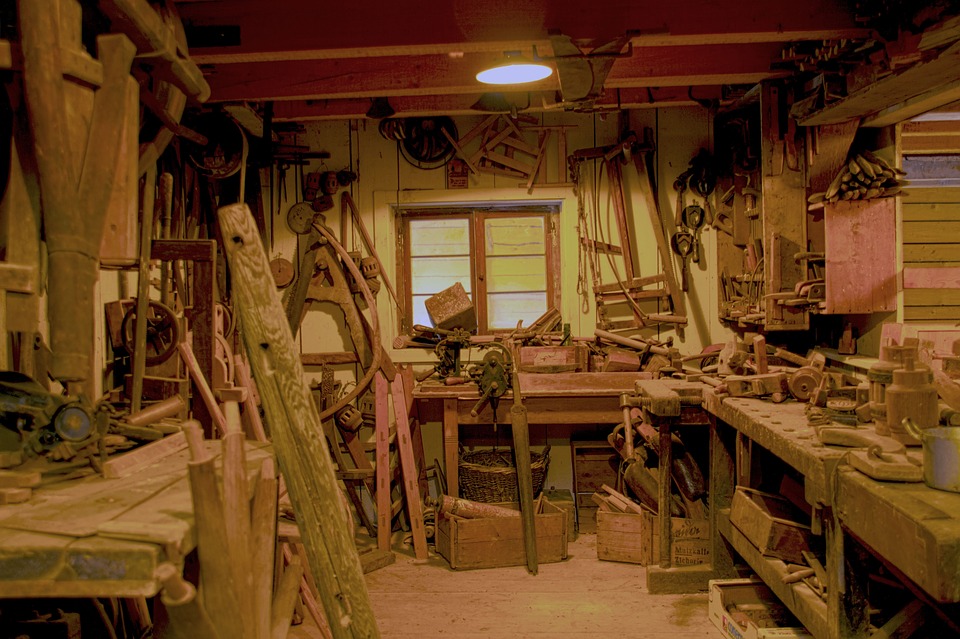
If you are constantly frustrated about not having enough room to work on your DIY projects, small business or anything else, perhaps you should consider building a workshop. This is an extensive project to tackle, and you will need to consider your options when it comes to space and materials. The one thing you can’t afford to sacrifice, however, is functionality. With this in mind, we give you the step by step guide to building a workshop.
Laying the floor
When constructing anything, you usually need to look from the bottom up. This is especially significant for workshops, because you need to make sure the soil is firm and the floor is leveled, so that it wouldn’t start sinking eventually. The soil beneath the base needs to be compacted and each block on top of it must be leveled. This is all you need to do to be sure the floor is leveled. However, if you live in an area where it rains frequently, you should install the floor high above the ground unless you want to have flooding issues.
Next, you need to frame and sheathe the walls and ensure that they’re standing up with the support of 2x4 braces. Secure the walls even tighter with a second cap of 2x4s on top. Laminate four 2x4s together to construct a ridge board. Once all of the rafters are in position, you may remove the supports.
Moving on to the roof
When all the rafters are in place, you need to strengthen their connection with the walls to ensure stability. Putting metal hurricane straps across the frame is the way to do it. Once that is done, proceed to laying down the roof. Standard oriented strand boards (OSBs) are enough to protect the construction from external elements. A coat of exterior paint and a sealer for the OSBs will provide additional protection. This is the most affordable solution, but you can make it more durable with a second layer of material or siding and shingles.

Workbench, tools and equipment
The most essential part of every workshop is the workbench. You can buy a workbench or build one from scratch. If you don’t feel the need for a highly customized workbench, buying is definitely the easier way. The market is filled with different workbenches ranging from foldable compact types to multi-function work tables. If, on the other hand, you want a custom work station, you need to start by constructing a frame and reinforcing it. The storage space and equipment zones are something you will decide based on your needs.
As for the equipment and tools, this is something that you will acquire depending on the type of work you are doing, but some of the usual things that are required in workshops are a manual or automated length stop, a miter saw, a jigsaw, a drill, a nail gun, an orbital sander and a staple gun.
Lighting and electricity
Electricity in your workshop is a must, but you need to think about your work process and install plenty of outlets too. The outlets should be positioned where all of your equipment can be plugged in at hand. Just in case, you should keep extension cords.
When it comes to workshop lighting, it is imperative to make it strong and efficient. That means you will need fluorescent lights installed across the workshop, but also task lights directly above your workstation.
The temperature and ventilation
Working in a workshop during hot summer months can be more exhausting than you can handle. The same goes for the cold winter months. To ensure you can do your work regardless of the season, you need to have an appropriate air conditioning unit. Also, because workshops are susceptible to smoke, dust and vapor, you will need a proper ventilation system for a constant airflow.
Building your own workshop is a challenging task, but with the help of this guide and your effort, you will be able to construct a fully functional workshop which you will be able to use for all of your projects.
Guest post by Carolin Petterson
About the Author
Carolin Petterson is a Business Lady and contributor for number of high-class websites. She loves to share her experiences and talk about practical solutions, but her specialties are sustainability, sustainable business and green living.
Other articles by Carolin
How to Greenovate Your Bathroom
Green Flooring Options for a Healthy Home
Sustainable and Energy-Efficient Flooring Solutions for Your Home
Eco-Friendly Interior Design Ideas
3 Essential Energy-Saving Waterproofing Techniques to Protect Your Home
The Environment and the Economy Are in Danger: What Can We Do?
5 Tips for Starting Your Own Construction Rental Company
How to Make Your Home Greener and More Energy-Efficient
Spice Up Your Home with These 4 Energy-Efficient Remodeling Ideas
What You Can Do to Make Your Home More Eco-Friendly
5 Eco-Friendly Ways to Renovate Your Home
Storage Space in Your Home – The Pillar of Sustainability
5 Ways to Create Energy-Efficient Homes
